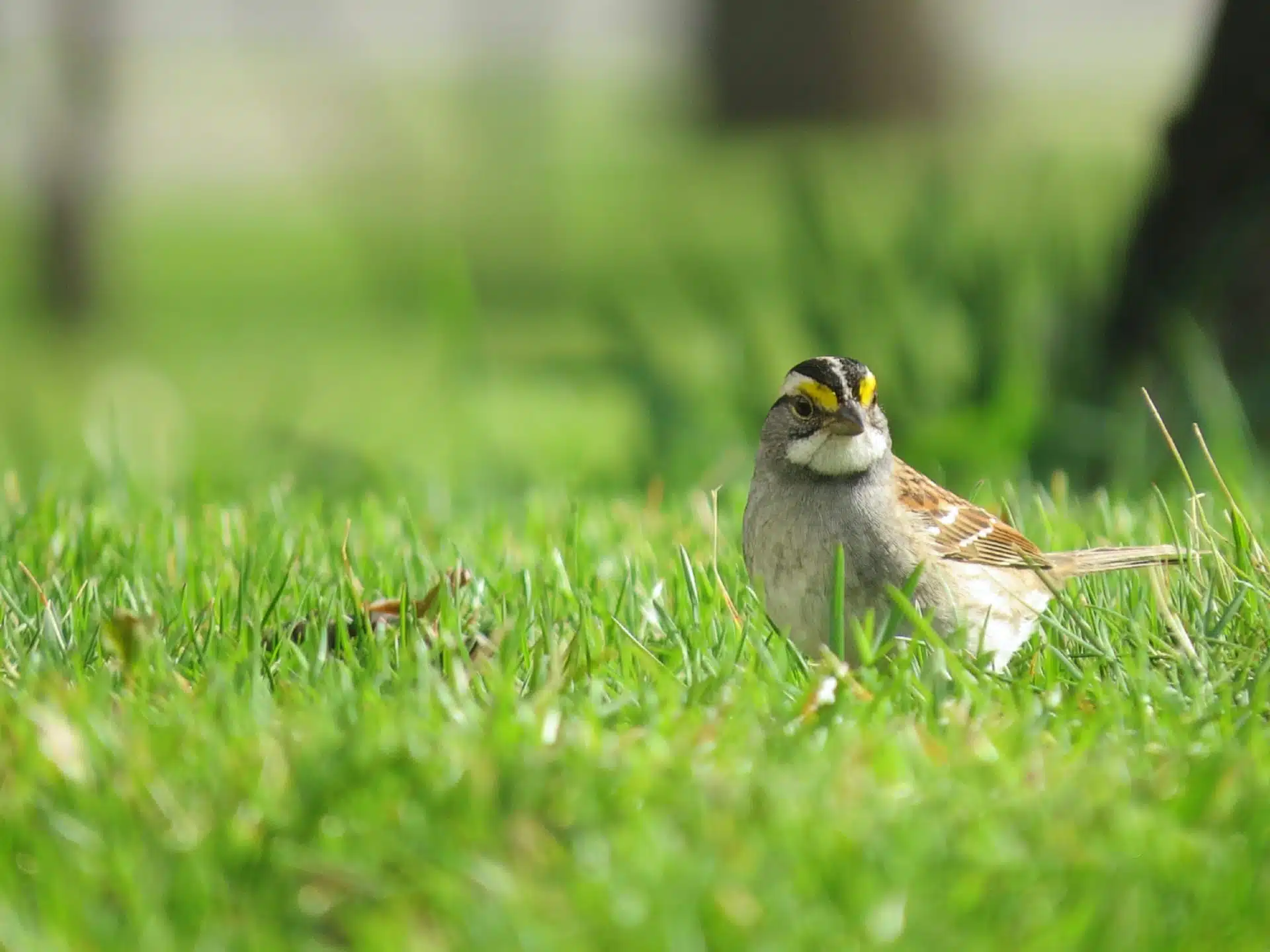Nature Profile
Birds
White-throated Sparrow
Zonotrichio albicollis

Voice: Song: Clear whistles of “Oh sweet Canada, Canada, Canada,” Call: Sharp, Volatile, “Chink.”
Across most of the eastern and southern U.S, white-throated sparrows are familiar backyard fall and winter birds. They can be found along edges of woodlots, hedgerows, thickets, and in city parks during the winter. The two different color morphs, head stripes of either tan or white, are usually seen shuffled about on the ground in loose flocks or near heavily thicketed bird feeders.
In the fall and winter, white-throated sparrows frequently visit bird feeders in search of millet and black oil sunflower seeds. When not at feeders, they eat seeds and fruits, including grasses, ragweed, sumac, grape, rose, blackberry, and dogwood. In the summer, they eat primarily insects found on the forest floor, including beetles, caterpillars, spiders, millipedes, centipedes, and snails. In the spring, they eat young buds and seeds of oak, apple, maple, beech, and elm trees.
White-throated sparrows sing their clear whistles, “Oh sweet Canada, Canada, Canada,” on both their wintering and breeding ranges. Scientists estimate 83% of the North American population breeds within the Boreal Forest. Adults almost always mate with the opposite color morph. Nests are typically on or near the ground. Nests are also usually built under living vegetation but can also be under dead vegetation from the previous year. Females build a 3-5.5-inch nest yearly, typically in the morning. They locate a dimple in the ground then build up the nest first with moss, after adding twigs, woodchips, grass and pine needles, until it is 1-2.5 inches deep. Finally, females line the nest with soft plant materials such as fine grass, rootlets and animal hair.
Females lay four to six pale blue or greenish blue, speckled purple-red eggs. Females incubate the eggs for eleven to fourteen days. Both parents feed nestlings almost exclusively. Young usually leave the nest seven to twelve days after hatching. Fledglings are tended to by the parents for at least two more weeks. White-throated sparrows can have one to two broods per year.
Although white-throated sparrows are widespread and common, with an estimated 10-20 million pairs range-wide, the North American Breeding Bird Survey indicates they are in decline over most of their range. In the U.S., they’ve declined by 63% during 1966-2014. The cause of this decline is not completely clear. Land use change, forest-management and global climate change may be a few of the factors. White-throated Sparrows are also highly vulnerable to collisions with buildings during migration. They are one of the most frequently killed species. Turning off building lights in major city and using bird-friendly window coverings may help to reduce these deaths.
Best Location to View: Woodland Garden, Corning Lake
Range: Mexico, North America
Size: Small
Wingspan: Small




